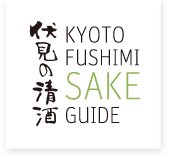home > Sake Trivia
Sake Trivia
Types of Japanese Sake
Japanese sake displays subtle changes in flavor depending on the season.
It is also one of the few alcoholic beverages that can be enjoyed either warm or chilled.
Sake types and their characteristics
Ginjo-shu
This is a type of sake made from white rice that has had at least 40% of its surface polished away (so that what remains is at most 60% of the size of the original rice grain), which is then brewed under intense scrutiny using a low temperature fermentation process. One can say that Ginjo-shu is the crystallization of the brewer’s art, technique and experience. The result is a fruity, opulent fragrance and a smooth flavor.
Junmai-shu
This sake is made from rice and koji (rice mold). As the name suggests, onlyrice is used as an ingredient (junmai means ‘purerice’). The degree of polishing of the rice grains is not specified. Junmai-shu has a full-bodied flavor,but in recent years we are starting to see lightbodied
Junmai-shu products on the market.
Honjozo-shu
Made from rice that has had at least 30% of its surface polished away (so that what remains is at most 70% of the size of the original rice grain) and koji (rice mold) as well as a limited amount of brewer’s alcohol.
Honjozo-shu has a flavor similar in body to Junmai-shu, however you may find it more crisp, dry and mellow.
Specific Classes of Sake
| Specific Class | Ingredients | Rice Polishing Ratio | % of koji (rice mold) | Requirements: taste, etc. |
|---|---|---|---|---|
| Junmai Daiginjo-shu | Rice, koji (rice mold) | at most 50% | at least 15% | Made using the Ginjo process Characteristic flavor and aroma; outstanding luster and color |
| Daiginjo-shu | Rice, koji (rice mold),brewer’s alcohol | at most 50% | at least 15% | Made using the Ginjo process Characteristic flavor and aroma; outstanding luster and color |
| Junmaiginjo-shu | Rice, koji (rice mold) | at most 60% | at least 15% | Made using the Ginjo process Characteristic flavor and aroma; excellent luster and color |
| Ginjo-shu | Rice, koji (rice mold), brewer’s alcohol | at most 60% | at least 15% | Made using the Ginjo process Characteristic flavor and aroma; excellent luster and color |
| Junmai-shu | Rice, koji (rice mold) | – | at least 15% | Excellent luster, color and flavor |
| Tokubetsu Junmai-shu | Rice, koji (rice mold) | at most 60% | at least 15% | Made using a special manufacturing process Outstanding luster, color and flavor |
| Honjozo-shu | Rice, koji (rice mold), brewer’s alcohol | at most 70% | at least 15% | Excellent luster, color and flavor |
| Tokubetsu Honjozo-shu | Rice, koji (rice mold), brewer’s alcohol | at most 60% | at least 15% | Made using a special manufacturing process Outstanding luster, color and flavor |
Other characteristic types of sake
Futsu-shu
This is a type of sake made from white rice that has had at least 40% of its surface polished away (so that what remains is at most 60% of the size of the original rice grain), which is then brewed under intense scrutiny using a low temperature fermentation process. One can say that Ginjo-shu is the crystallization of the brewer’s art, technique and experience. The result is a fruity, opulent fragrance and a smooth flavor.
Gen-shu
Once the crude sake (moromi) has been pressed, no water is added. This is a full-bodied sake with an alcohol content of between 18% and 20%.
Honjozo-shu
Once the fermentation process is complete, the liquid is filtered through a rough cloth or strainer, and the result is Nigori-sake. The liquid is milky cloudy as opposed to clear, and the Nigori-sake has the flavor of the moromi. Nigori-sake that has not undergone heat processing still retains live yeast and enzymes, which can result in a light carbonation, which is why it can also be referred to as Kassei-shu (‘active’ sake).
Yawaragi-mizu – Try some!
Yawaragi-mizu (lit. “alleviating water”) is the practice of drinking water while one enjoys Japanese sake.
By drinking a little water between sips of Japanese sake, you will retain a clear head and avoid succumbing to the effects of the alcohol.
The water thus alleviates the intoxication—hence the name Yawaragi-mizu.
